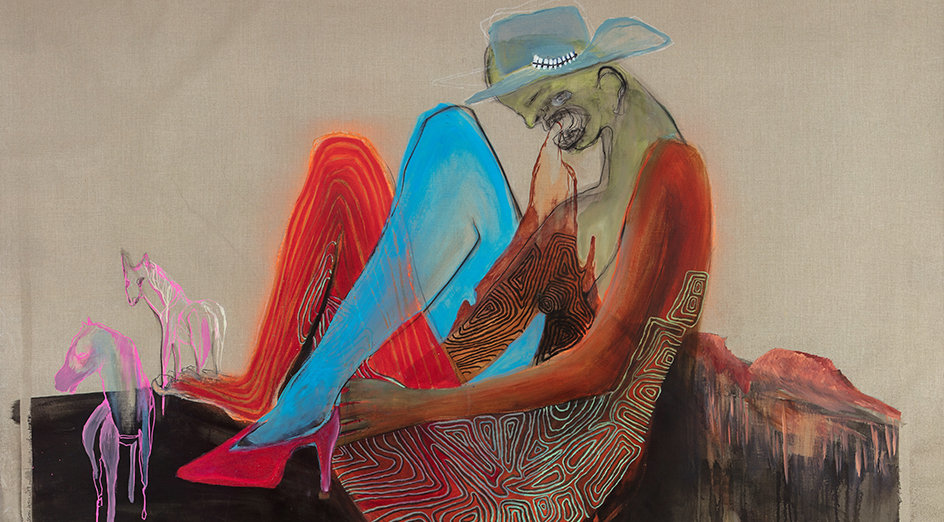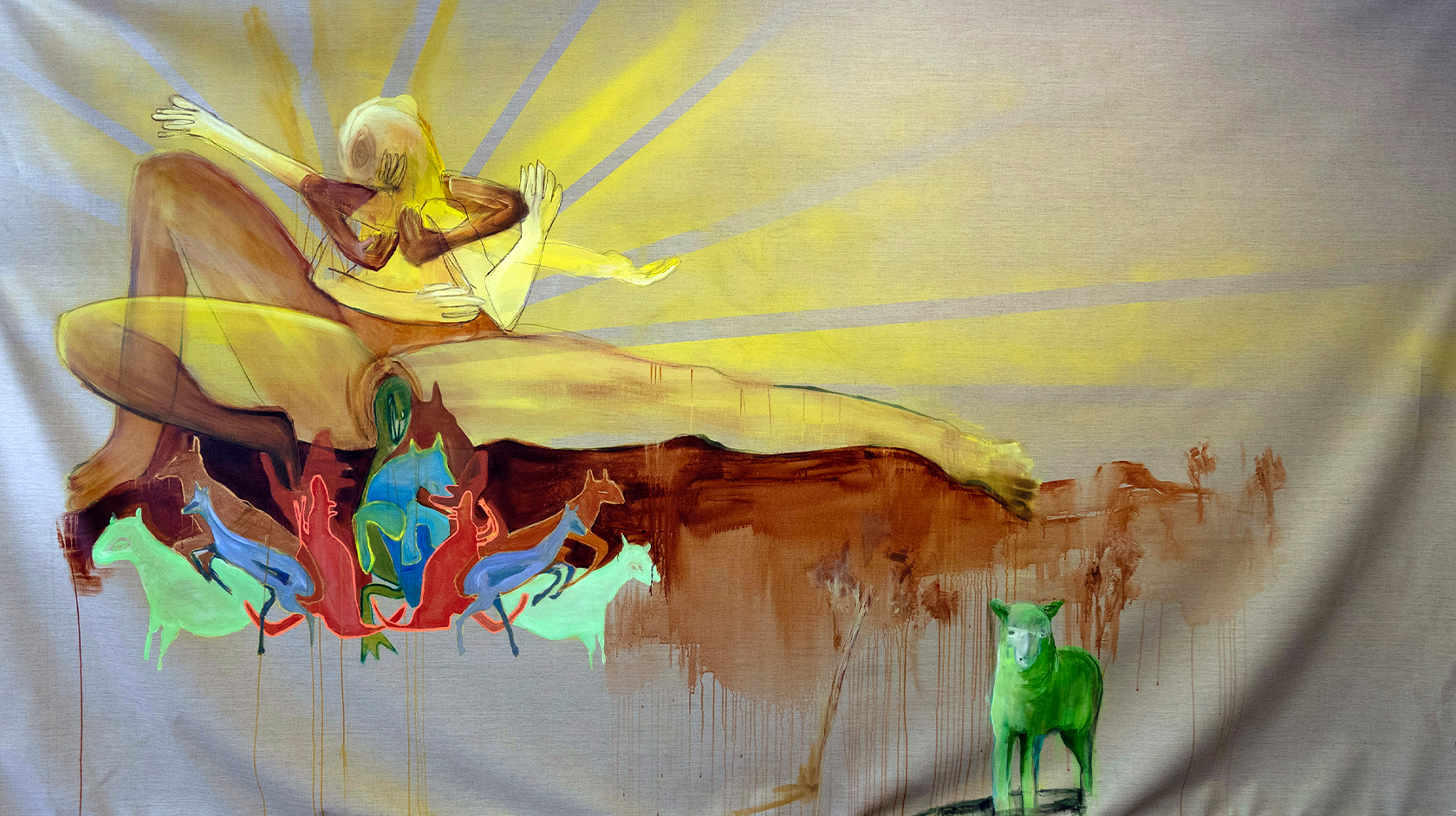A new exhibition opening this month at the Lawrence Wilson Art Gallery follows the long shadow cast by colonisation and the bleak legacy of genocide, dispossession and racism that remains etched into contemporary Australia.
Jintulu: People of the Sun interweaves ancient stories with more recent experiences of control, displacement and appropriation.
The exhibition juxtaposes new works by senior Walmajarri artist Murungkurr Terry Murray, acclaimed Martu artist Curtis Taylor and Persian-South African artist Natalie Scholtz, with iconic works from The University of Western Australia’s collections by Valerie Takao Binder, Irwin Lewis, Sidney Nolan and Alison Alder.

Image: Natalie Scholtz and Curtis Taylor, MUTHA CUNTRY, 2023.
Presented as part of Perth Festival 2024, Jintulu is a major collaboration between the Berndt Museum, the Cruthers Collection of Women’s Art and the UWA Art Collection at LWAG.
Taken from the Martu language of the Western Desert, it imagines Aboriginal Australians as the ‘People of the Sun’, strengthened by and bathed in its life-giving force.
The exhibition is led by the Berndt Museum’s Curator Michael Bonner, a Yanyuwa/Jingili man and supported by Lee Kinsella, Curator of the Cruthers Collection, and Sam Leung, Assistant Curator and Producer at the Berndt Museum.
Walmajarri artist Murungkurr Terry Murray has responded to Sidney Nolan’s expansive The snake,1973 – an almost 13-metre-long artwork that appropriates Aboriginal faces, totems and knowledge.
Mr Murray’s response is a bold reclamation of the Rainbow Serpent, a creation figure that has become amalgamated and frequently adopted as a symbol of Aboriginal Australia.
A gallery is dedicated to Natalie Scholtz’s exploration of blackness which blurs and drips in a sensual, sometimes grotesque, series of figurative paintings. The Persian-South African artist invokes the cultural and political symbols of her homeland as she builds a dialogue with works by Yamatji artist Irwin Lewis.

Image: Natalie Scholtz, Unbirthing Patriotism, 2023.
“In my work, experience and memory morph into a dream realm of self, identity and place,” Ms Scholtz said. “They are the experience of the in-between body in contemporary Australia.”
In Boong, Curtis Taylor’s unflinching gaze forces the viewer to confront the harsh reality of racism today.
Presented in a darkened gallery space, bull bars hang as their headlights flicker intermittently to a barrage of racist slurs in this visceral audio-light installation. The work was first presented at Dark Mofo 2023 and will make its WA premiere in Jintulu.
“The sounds of black bodies against the steel bars is how the derogatory term ‘boong’ became folklore according to country white men,” Mr Taylor said.
In the centre of the gallery, two works anchor the exhibition to key moments in recent Australian history.
Canberra-based printmaker Alison Alder’s Intervention series addresses the impact of the Howard Government’s 2007 Northern Territory Emergency Response.
Noongar artist Valerie Takao Binder’s intimate and deeply personal installation, Dwelling Place/Mia Mia and Yile Boodja/Sandy Country is a recreation of her childhood home of the 1950s Middle Swan encampment.
Co-curator Lee Kinsella said Alder and Takao Binder were powerful voices who bore witness to the impact of government policies upon Aboriginal people.
Berndt Museum’s Curator Michael Bonner said the exhibition came at the right time.
“We’ve had the referendum on the Voice to Parliament, where we’ve seen language lost, families separated, and land taken. In Jintulu, what we’re really asking is: ‘What’s changed’,” Mr Bonner said.
To attend the preview on Thursday 15 February, contact Sam Leung, Assistant Curator and Producer, Berndt Museum at [email protected]
The exhibition will open on Friday 16 February from 6pm to 8pm and runs until April 27.
The gallery is open Tuesday to Sunday from 12 noon to 5pm and admission is free. For more information see the LWAG website.






